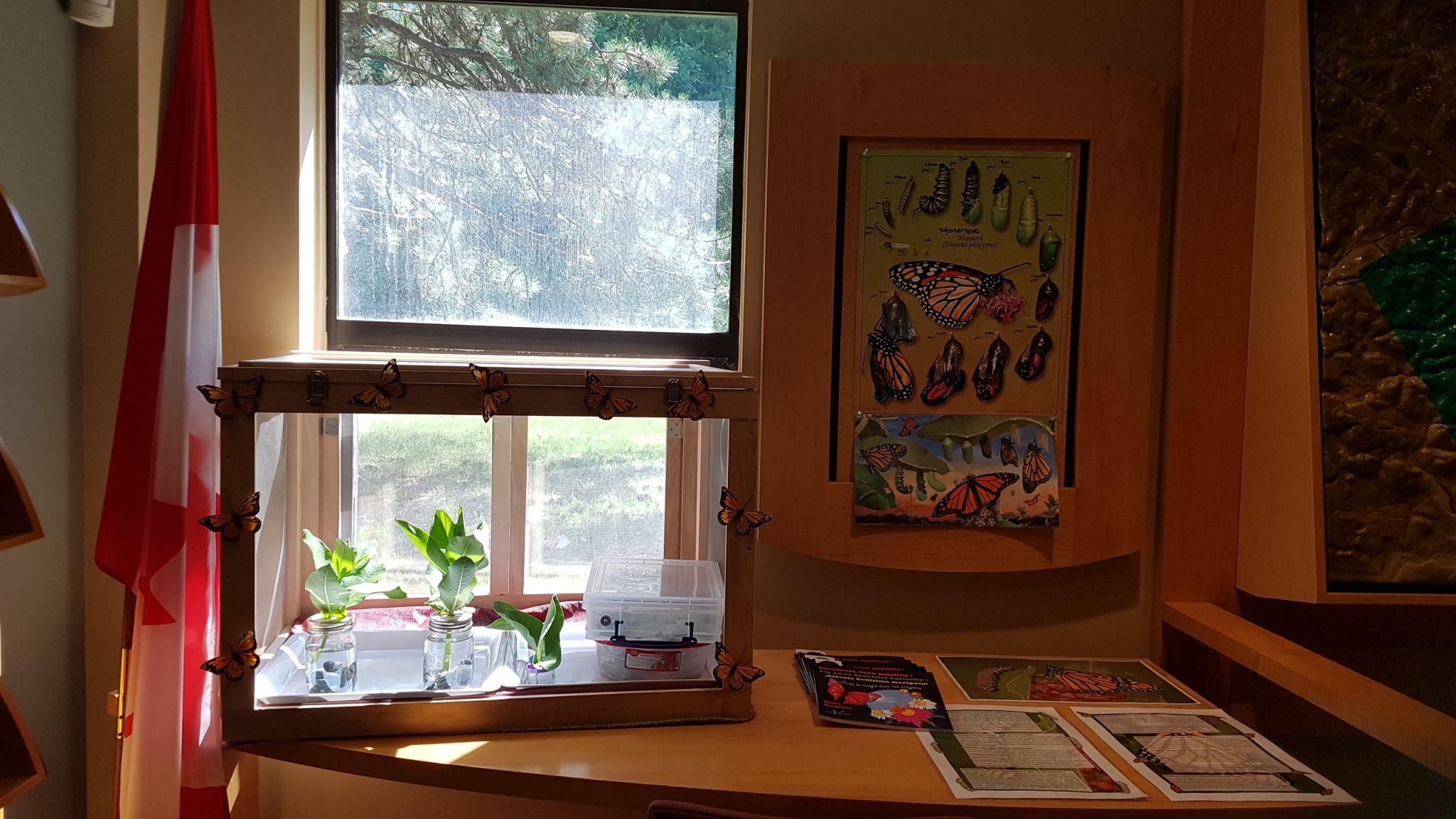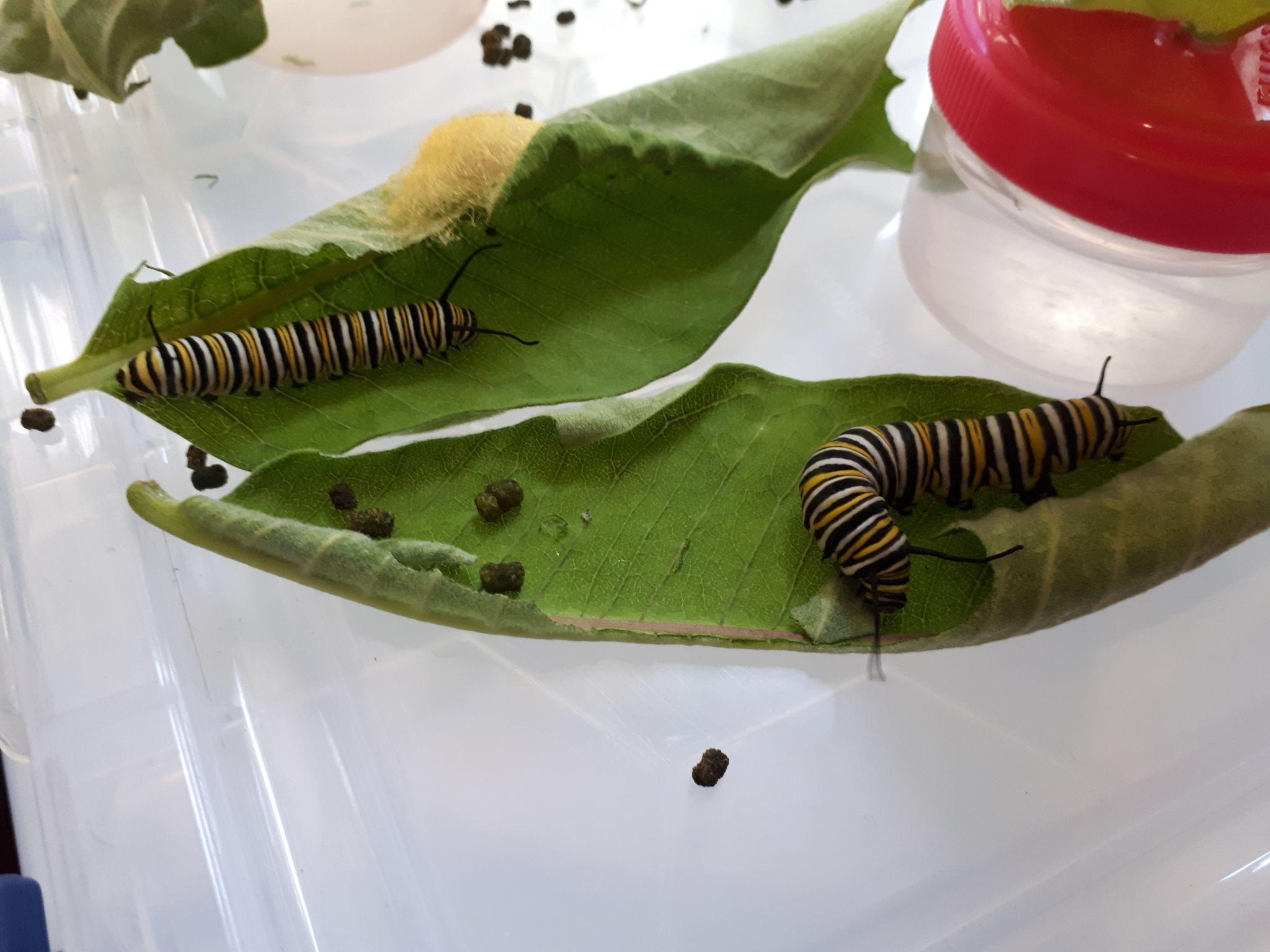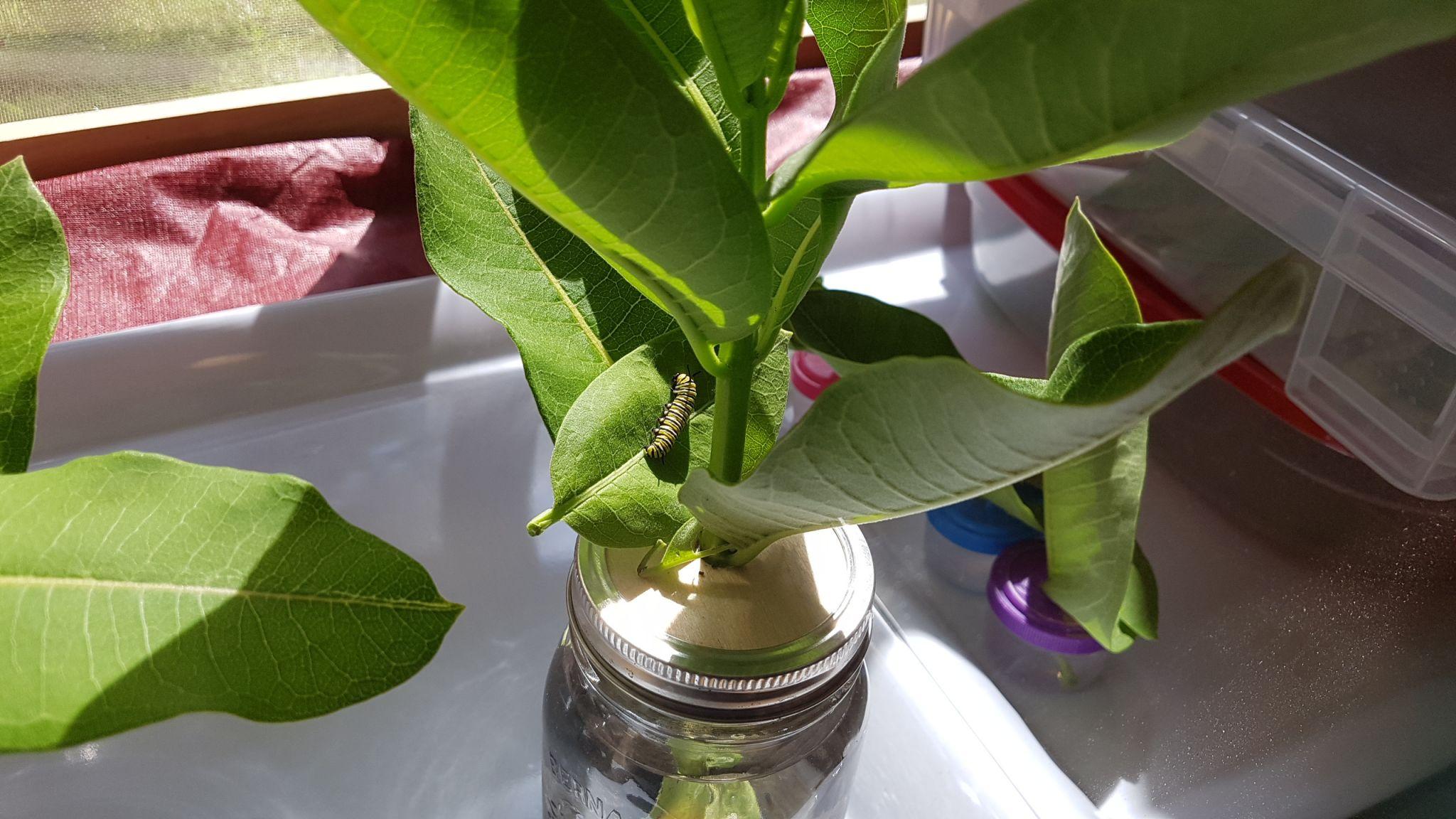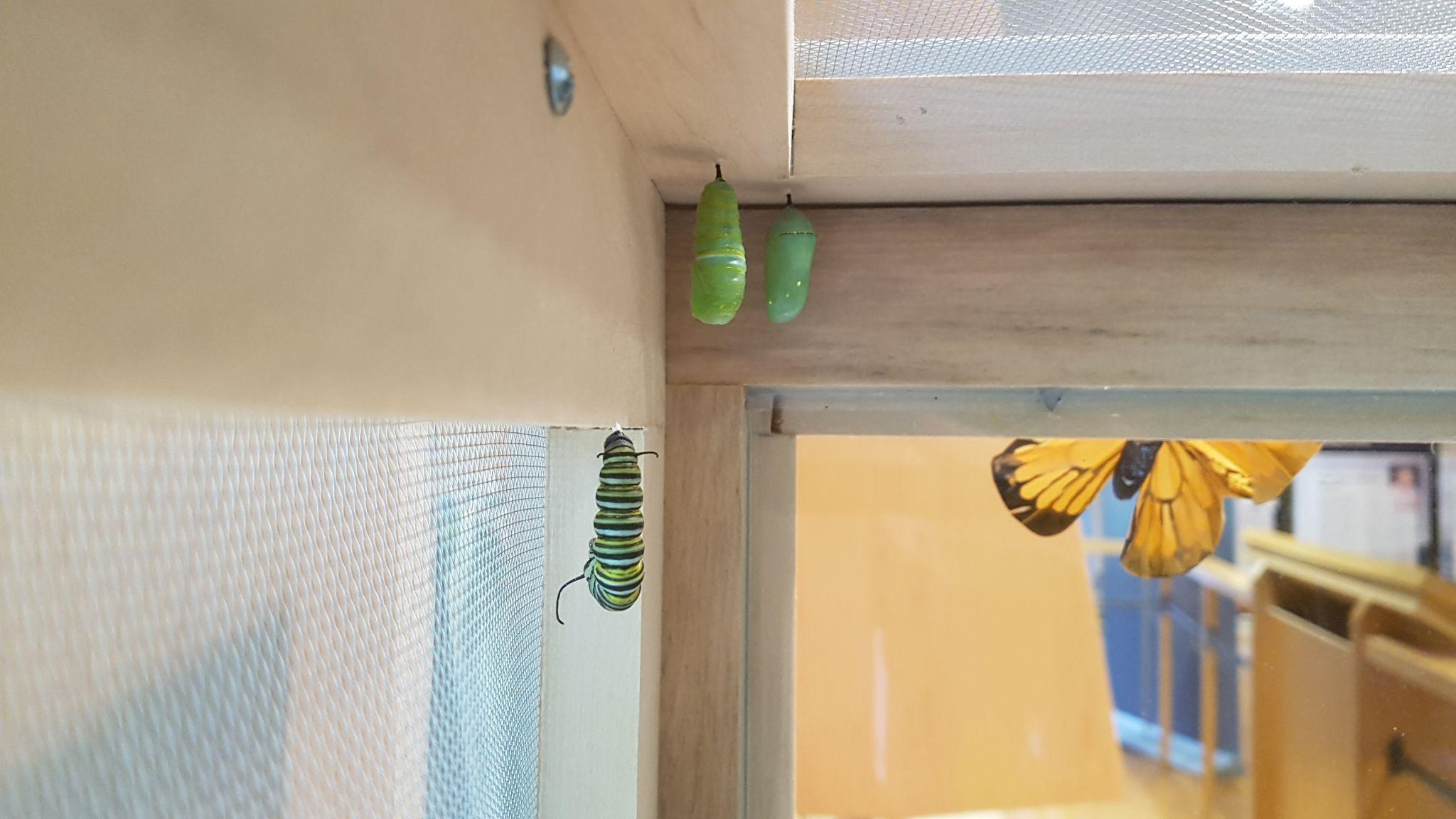Author: Catherine Bouchard, Program Officer, Cultural resources
Did you know that milkweed is a critical food source for caterpillars and can be found throughout Gatineau Park? That is why Gatineau Park is a destination for monarch butterflies every summer during their migratory period.
Inspired by the monarch butterflies, in the summer of 2019, Gatineau Park biologists hosted a unique and captivating exhibit showcasing the monarch butterfly’s incredible life cycle. Visitors had the opportunity to observe eggs, caterpillars and chrysalises in a specially designed butterfly aviary. Once these fascinating creatures matured into adult butterflies, they were released back into the wild.
Discovering Monarch Habitats in Gatineau Park
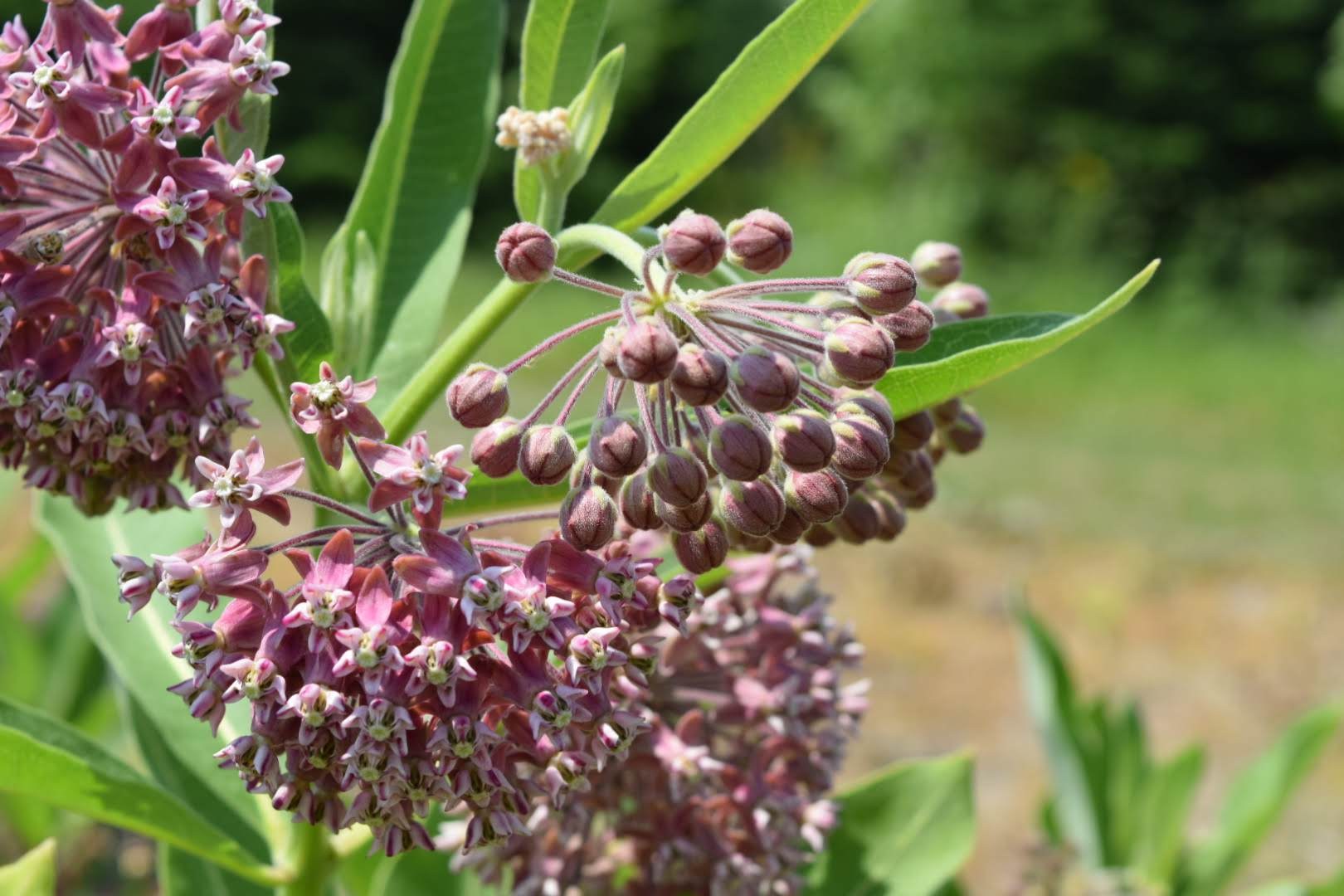
The NCC's journey to understand monarch habitats began with studies conducted in 2015 and 2016. Researchers sought areas rich in milkweed, the primary food source for monarch caterpillars. Milkweed thrives in full sunlight and is found in approximately four percent of Gatineau Park’s habitat.
Key milkweed locations include:
- Meech Creek Valley, near P16
- The Church Hill Picnic Area
- Trails 5 and 27, near P2
- The Luskville Falls Trail parking lot
Conservation Efforts to Protect Monarch Butterflies
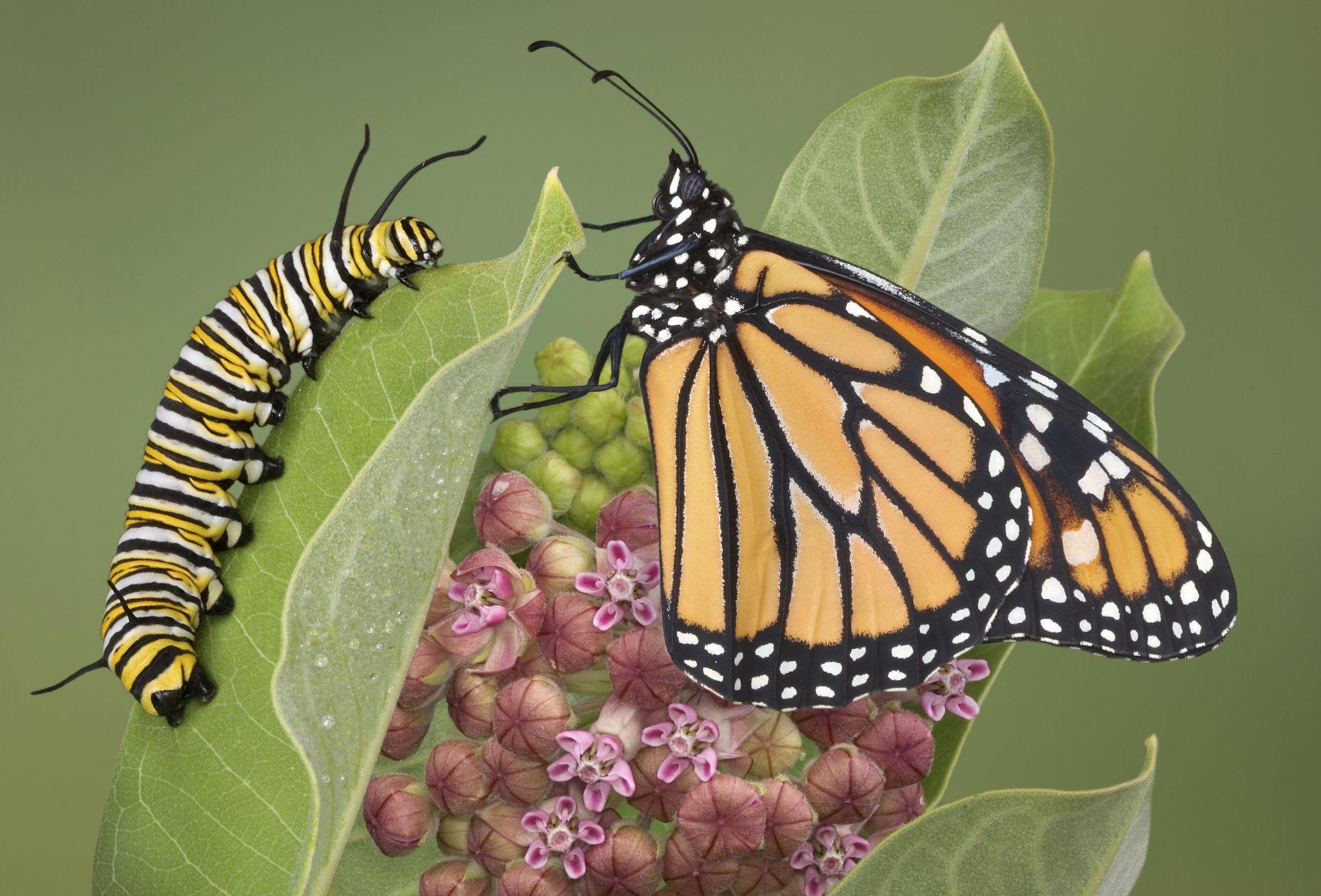
In 2015, the NCC embarked on a significant project to evaluate and protect monarch habitats.
This project aimed to:
- Assess habitat potential and the species’ reproductive success
- Monitor monarch populations and identify threats on NCC lands
During the first year, researchers tracked the various stages of the monarch’s life cycle, from eggs to fully developed butterflies. Their observations confirmed that Gatineau Park offers a suitable environment for monarch reproduction, leading to the development of targeted conservation strategies. In November 2016, the Committee on the Status of Endangered Wildlife in Canada (COSEWIC) designated the monarch butterfly a species at risk. Prior to this, the NCC had inventoried 57 locations, prioritizing 13 sites of high or very high importance. These sites are regularly monitored to track the species’ presence and reproductive success.
Recent Surveys and Community Involvement
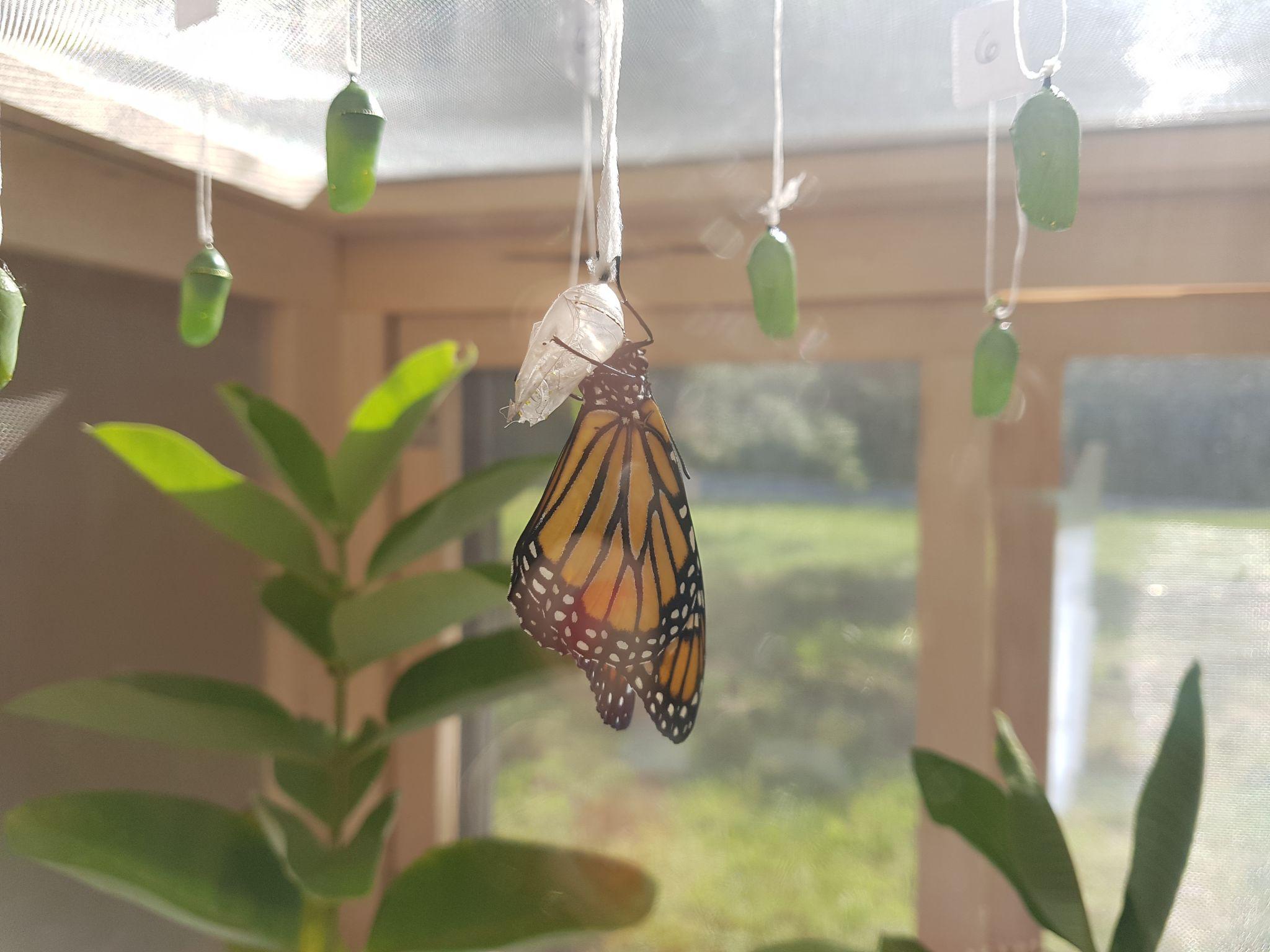
In July 2019, the Citizen Science Program conducted a survey near the P3 parking lot (rue Gamelin and Gatineau Parkway). Dedicated participants examined nearly 1,600 milkweed plants, recording 23 eggs, six caterpillars and two adult butterflies. This survey is part of Mission Monarch, an initiative by the Montreal Insectarium aimed at gathering data and supporting monarch conservation efforts in eastern Canada.
Embracing the Monarch’s Journey
The monarch butterfly’s brief yet spectacular visit reminds us of the importance of conservation. Exhibits like the one at Gatineau Park offer a glimpse into these remarkable insects’ lives, helping raise awareness about their plight. As we continue to support and learn from these conservation efforts, we also encourage the public to visit Gatineau Park and witness first-hand the results of these dedicated efforts. Every observation and every effort contribute to ensuring a future for the monarch butterfly.
